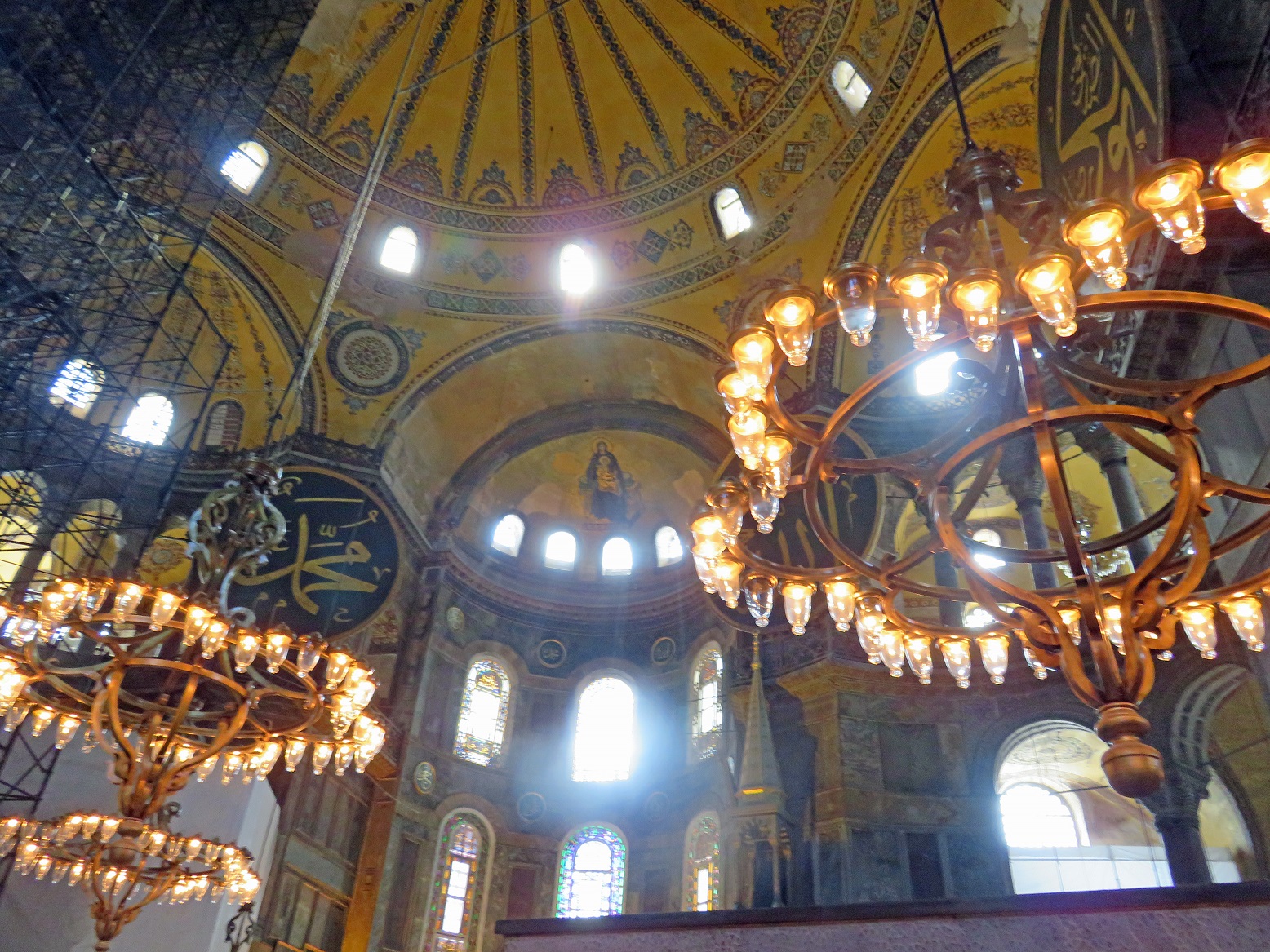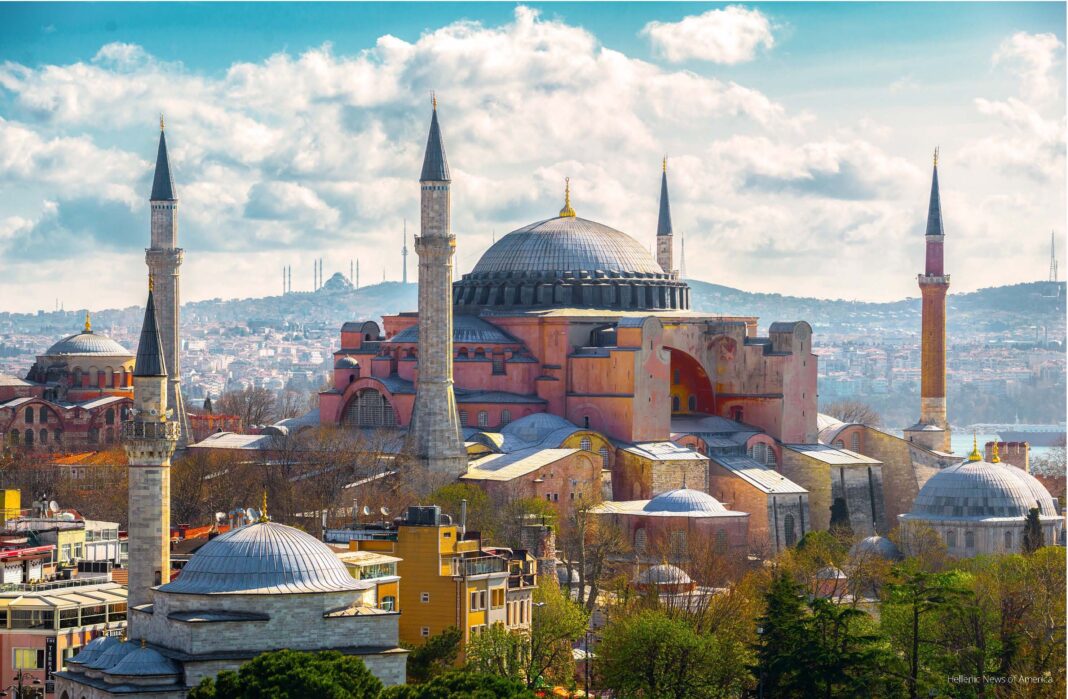“All truths are easy to understand once they are discovered; the point is to discover them,” by Galileo di Vincenzo Bonaulti de Galilei, an Italian astronomer, physicist, and engineer.1
Hagia Sophia is an architectural monument that belongs to the heritage of not only the Greek and Orthodox nations, but to the Armenian civilization. The Armenian civilization is more than just the Armenian Holocaust. Wherever they go, they adopt the customs of their new country, building the community, but always remembering their Armenian roots. Hagia Sophia’s dome was in a dangerous condition in the tenth century A.D. A Byzantine Emperor with Armenian roots, who was firstly a supporter of the Greek language, culture, and Greek Orthodoxy, asked he greatest Armenian architect to make repairs. It is never said in mainstream culture. Scholars know the truth.
“Trdat the Architect” or Tiridates (c. 940s-c. 1020s?) was an Armenian architect who is noted for his role in the reconstruction of the Hagia Sophia’s dome in Constantinople following an earthquake in the 10th century CE, as well as the Cathedral of Ani and the Church of Gagik in what is now present-day Turkey. Along with Momik (c.1270-1333 CE), Trdat is the most famous Armenian architect of the Middle Ages.”2
“Very little if anything concrete is known about Trdat’s earliest years aside from that he was Armenian with extensive talents in mathematics and architectural design. Trdat’s life coincided with the medieval Armenian golden era as well as the so-called “Macedonian Renaissance” of the Byzantine Empire (867-1056 CE). After centuries of intermittent warfare and constant invasions, Armenians and Byzantines halted the tide of the Arab onslaught, stabilizing their borders and safeguarding their population centers. This was a time of political and economic stability in addition to cultural effervescence in both Armenia and Byzantium. Historians and archaeologists can trace Trdat’s movements based on his construction and reconstruction projects around historical Armenia as well as the Byzantine Empire. Trdat lived and worked primarily in Shirak province, which in the 10th and 11th century CE included the city of Ani, the capital of Bagratid Armenia (885-1045 CE).”

It is not known how Trdat first came to Constantinople and was ultimately entrusted with the reconstruction of the Hagia Sophia, following an earthquake in 988 CE. It is entirely possible that Trdat was already in Constantinople while work halted on Ani Cathedral after the death of Smbat II in 989 CE. Armenians frequently rose to positions of great prominence as scholars, generals, and rulers under the Byzantine emperors of the Macedonian dynasty (867-1056 CE). Many of the Byzantine emperors of this dynasty were also either Armenian or partially Armenian by ancestry. Emperor Basil II (r 976-1025 CE.), ever concerned with the boundaries of his eastern frontier with the Georgians, Armenians, and Arabs, might have heard of Trdat and his work from those he encountered while campaigning in the Caucasus. According to the Chronicle of the Armenian historian Matthew of Edessa (d. 1144 CE), Basil II conversed with Armenian scholars during his frequent travels throughout the Caucasus.
Trdat was charged by Basil II to repair the Hagia Sophia’s western dome arch. This was no simple task as the Hagia Sophia employs four triangular pendentives to transpose the weight of its circular dome to a quadrilateral supporting superstructure without the use of columns or pillars in interior spaces. Trdat rebuilt and strengthened the destroyed dome arch with fifteen dome ribs. Repair and reconstruction took six years, and the Hagia Sophia reopened in 994 CE. The fact that the Hagia Sophia has not suffered severe damage in the same area for over 1,000 years serves as a testimony to Trdat’s brilliance and acumen as an architect.
Trdat’s Legacy stands out amongst medieval Armenian architects as he undertook large-scale projects in both Armenia and Byzantium. The scholastic debate as to the amount of cross-cultural exchange in architecture facilitated by Trdat continues, but it is difficult to deny that Trdat’s enduring legacy lies in his ability to have refined and expanded the architectural models and traditions of his Armenian and Byzantine patrons.”3 This is the truth of Hagia Sophia that Galileo said “must be discovered”.









